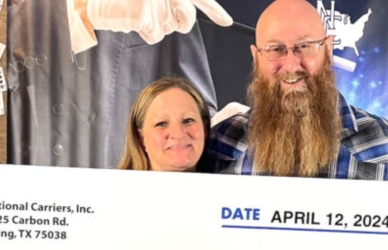When looking at safety in 2024, the predominant concern in the trucking industry may not be exclusively tied to specific rulemaking, as highlighted by co-director at Scopelitis Transportation Consulting, P. Sean Garney.
“Specifically, the industry is awaiting FMCSA’s final decision on how the CSA [Compliance, Safety, Accountability] Safety Measurement System will be improved,” he said.
The Federal Motor Carrier Safety Administration (FMCSA) and its state partners are gearing up to initiate Level 8 commercial vehicle inspections, a groundbreaking process conducted electronically while vehicles are in motion on the highway, eliminating the need for direct interaction with enforcement officers. This innovative approach to safety inspections has the potential to reshape how the industry engages with roadside enforcement in the future.
“As a part of that, expected updates to FMCSA’s DataQ’s system and the Crash Preventability Determination program will have big positive impacts on motor carriers and is part of a wider strategy to improve law enforcement targeting and data quality,” Garney said.
In the realm of safety-related rulemakings set to unfold in 2024, several noteworthy initiatives are on the docket. These include the implementation of speed limiters for heavy trucks, the incorporation of automatic emergency braking systems, and the establishment of oversight for automated driving systems. These advancements underscore a commitment to enhancing safety measures and integrating cutting-edge technologies into the trucking landscape.
Furthermore, 2024 might see the long-awaited publication of guidelines regarding the use of hair for drug testing. After undergoing thorough review at the White House throughout 2023, the U.S. Department of Health and Human Services is poised to unveil comprehensive guidelines, addressing a critical aspect of ensuring safety within the industry.
“Even if HHS finalizes it in 2024, DOT will still need to incorporate the HHS standard into the DOT drug testing rules that would allow industry to use hair as an alternative sample to urine or oral fluids, which could take another year,” Garney said.
As these safety-related developments unfold, trucking professionals should stay informed and proactive in adapting to the evolving regulatory landscape for the benefit of both drivers and the entire trucking industry.
Source: Freightwaves











